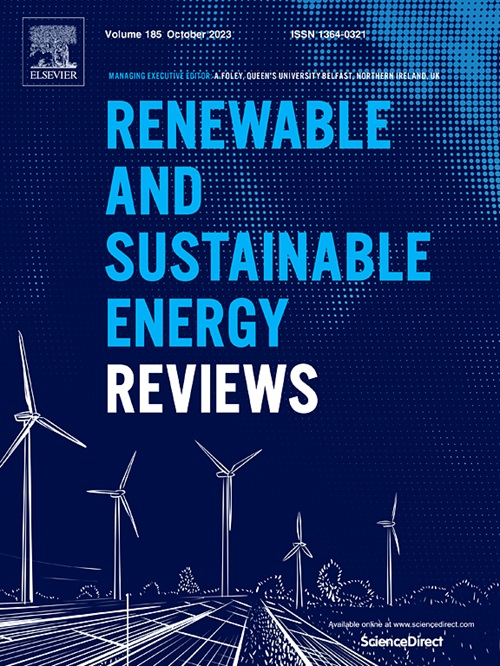Value-added recycling strategies for decommissioned wind turbine blades: A review
IF 16.3
1区 工程技术
Q1 ENERGY & FUELS
引用次数: 0
Abstract
To meet global carbon reduction targets, countries are accelerating the development of wind energy through economic incentives. For example, the European Union plans to invest an estimated €800 billion in offshore wind by 2050, while China allocated approximately RMB 3.43 billion in wind power subsidies in 2024. These policy incentives have significantly driven the expansion of installed wind capacity, with the cumulative global capacity reaching 1133 GW by the end of 2024. However, this expansion has raised growing concerns regarding the disposal of decommissioned wind turbine blades (WTBs). The aim of this review is to propose that recycling strategies should be tailored for different parts of WTBs. Therefore, we classify them into eight categories based on material utilization. In addition, a novel standardized deconstruction method, “Vertical segmentation and horizontal slicing,” is proposed. Finally, the reuse potential of end-of-life WTBs in civil engineering and the main directions for future research are provided.

退役风机叶片的增值回收策略综述
为了实现全球碳减排目标,各国正在通过经济激励措施加速风能的发展。例如,欧盟计划到2050年投资约8000亿欧元用于海上风电,而中国在2024年拨款约34.3亿元人民币用于风电补贴。这些政策激励措施显著推动了风电装机容量的扩张,到2024年底,全球累计装机容量达到1133吉瓦。然而,这种扩张引起了人们对退役风力涡轮机叶片(WTBs)处理的日益关注。本综述的目的是建议针对垃圾垃圾的不同部分制定相应的回收策略。因此,我们根据材料利用率将其分为八类。此外,提出了一种新的标准化解构方法“垂直分割和水平切片”。最后,提出了废旧垃圾在土木工程中的再利用潜力和未来研究的主要方向。
本文章由计算机程序翻译,如有差异,请以英文原文为准。
求助全文
约1分钟内获得全文
求助全文
来源期刊

Renewable and Sustainable Energy Reviews
工程技术-能源与燃料
CiteScore
31.20
自引率
5.70%
发文量
1055
审稿时长
62 days
期刊介绍:
The mission of Renewable and Sustainable Energy Reviews is to disseminate the most compelling and pertinent critical insights in renewable and sustainable energy, fostering collaboration among the research community, private sector, and policy and decision makers. The journal aims to exchange challenges, solutions, innovative concepts, and technologies, contributing to sustainable development, the transition to a low-carbon future, and the attainment of emissions targets outlined by the United Nations Framework Convention on Climate Change.
Renewable and Sustainable Energy Reviews publishes a diverse range of content, including review papers, original research, case studies, and analyses of new technologies, all featuring a substantial review component such as critique, comparison, or analysis. Introducing a distinctive paper type, Expert Insights, the journal presents commissioned mini-reviews authored by field leaders, addressing topics of significant interest. Case studies undergo consideration only if they showcase the work's applicability to other regions or contribute valuable insights to the broader field of renewable and sustainable energy. Notably, a bibliographic or literature review lacking critical analysis is deemed unsuitable for publication.
 求助内容:
求助内容: 应助结果提醒方式:
应助结果提醒方式:


